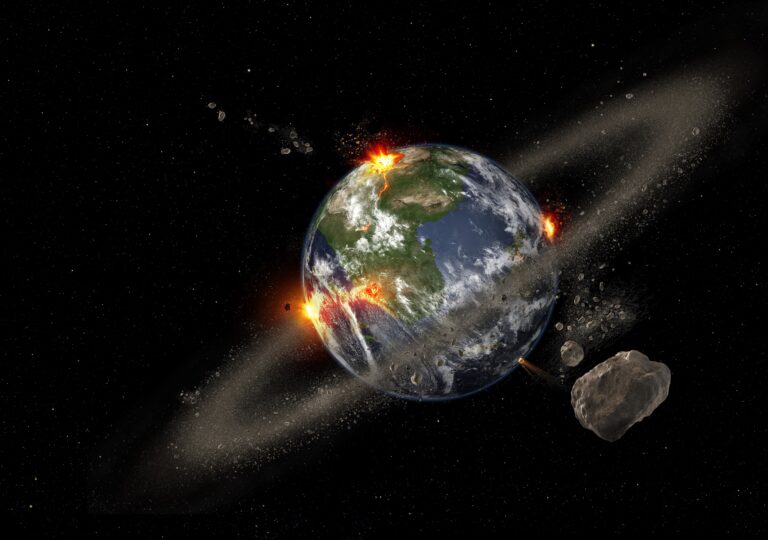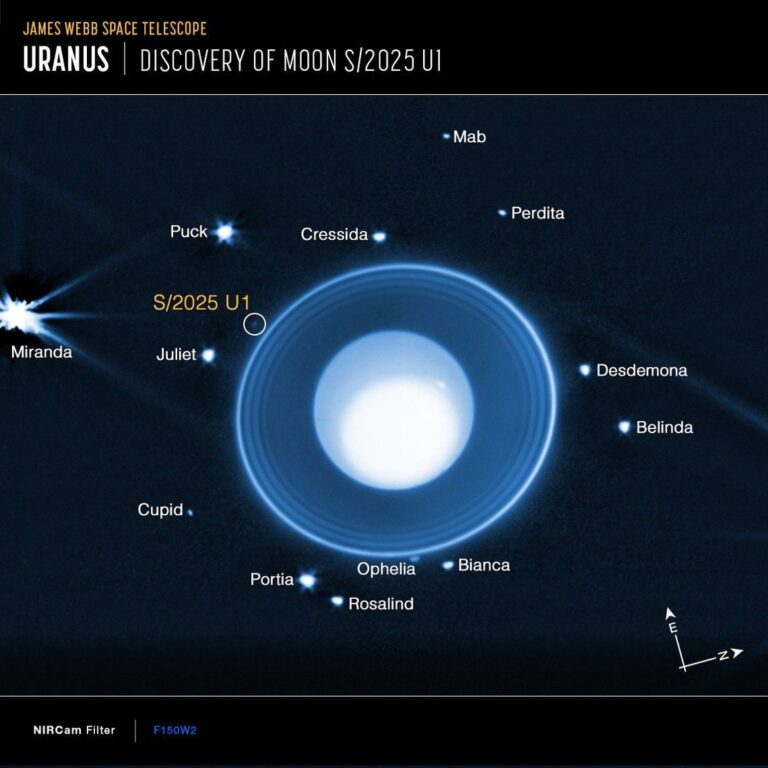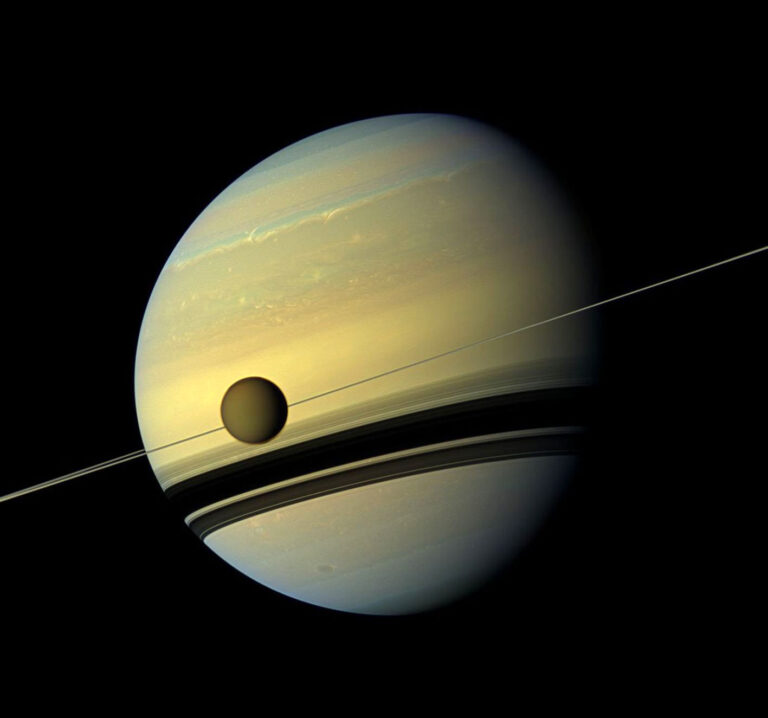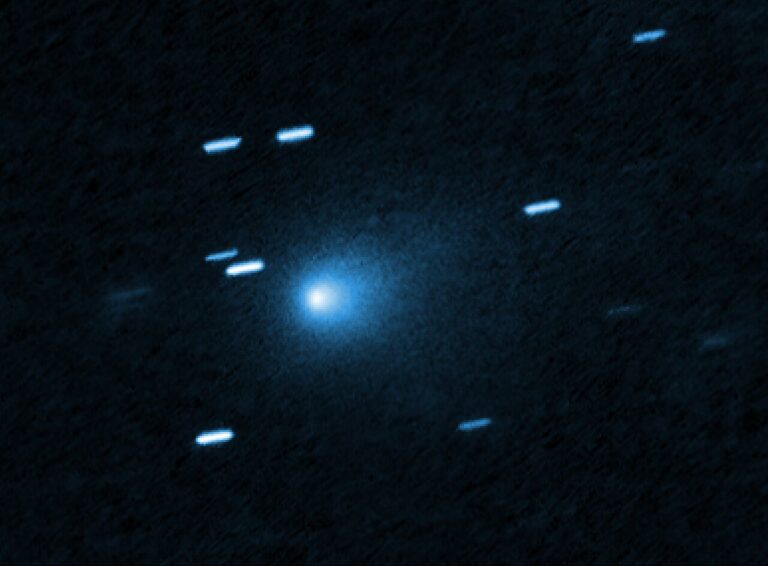Key Takeaways:
A cosmic perspective is always a little unnerving. For example, we occupy the third large rock from a middle-aged dwarf star we call the Sun, which resides in a quiet backwater of a barred spiral galaxy known as the Milky Way, itself one of billions of galaxies. Yet at the same time, we can take heart in knowing that our little tract of the universe remains exceptional as the only place where we know life exists. Our solar system hosts one abode for life, Earth, but in decades to come we may learn of others — perhaps biological enclaves on Mars or Jupiter’s moon Europa. Although our solar system likely is not unique in this respect, definitive evidence for life on worlds orbiting other stars will be harder to find.
All told, the solar system contains about 4 million trillion trillion pounds of material, or about 1.0013 solar masses. The number on the left side of the decimal is the mass of the Sun itself, and about 73 percent of what’s on the right side is held in the giant planet Jupiter. The remainder includes everything else: Earth and the other planets, moons, dwarf planets, asteroids and comets of all sizes, as well as dust and icy grains. One could correctly describe our planetary system as consisting of Jupiter plus debris.
The star that brightens our days, the Sun, is the solar system’s source of heat and light as well as its central mass, a gravitational anchor holding everything together as we travel around the galaxy. Its warmth naturally divides the planetary system into two zones of disparate size: one hot, bright, and compact, and the other cold, dark, and sprawling. Here’s how it all fits together.
Light takes eight minutes, give or take a few seconds, to reach Earth from the Sun’s surface. The average distance is 92.96 million miles (149.6 million kilometers). We’ve barely begun our tour of the solar system, and numbers using familiar units already are cumbersome. So astronomers devised the astronomical unit (AU; see “Solar system yardstick,” p. 26) as a simpler way to express distances at the scale of planetary orbits. The average distance from Earth to the Sun represents 1 AU.
Mercury lies closest to the Sun, at an average distance of 39 percent of Earth’s, but its eccentric orbit — the most elongated of all the eight major planets — means this number varies. At its greatest distance, called aphelion, Mercury is 0.467 AU from the Sun, and at its closest point, called perihelion, it’s just 0.308 AU away. Standing on Mercury at this time, the Sun would appear 3.2 times larger than it ever appears from Earth. Surface temperatures reach 800° F (400° C), hot enough to melt lead. Baked by sunlight, pummeled by charged particles streaming from the Sun, and with just 38 percent of Earth’s diameter, Mercury maintains only a wisp of an atmosphere. But a growing body of evidence suggests that despite its front-row seat in the solar system’s hot zone, Mercury has ice.
In 1992, astronomers at Arecibo Observatory in Puerto Rico bounced radar off the planet’s polar regions, revealing radar-reflective deposits on the floors of a few craters where daylight never shines. Decades earlier, astronomers had theorized that ice from comets and asteroids crashing on Mercury could find their way to “cold traps” in permanently shadowed polar craters. Data collected by NASA’s Mercury-orbiting MESSENGER spacecraft in 2012 confirmed that these craters contain hydrogen-rich layers consistent with the presence of water ice. A similar process appears to have preserved subsurface ice in the Moon’s polar areas.
Radar mapping of Venus from Earth and from orbiting spacecraft shows a world of fascinating geography. It is the only other planet in the solar system known to host active volcanoes. In 2015, scientists studying thermal imaging by the European Space Agency’s (ESA) Venus Express orbiter reported 1,530° F (830° C) hot spots along the planet’s Ganiki Chasma rift zone, a type of feature associated with terrestrial volcanism. Researchers have observed episodes where the temperatures of these spots abruptly increase and then cool down, suggesting ongoing eruptions.
Next out is Earth, home sweet home and the only planet in the solar system where liquid water freely exists on the surface. As far as we know, the presence of water is a necessity for life. Astronomers extend this concept to define a star’s “habitable zone” — a range of orbital distances where liquid water potentially could exist — as a way to identify exoplanets that may be capable of supporting life as we understand it. While we can quibble with the definition — perhaps there’s a biology that uses solvents other than water or maybe life can develop entirely beneath the surface — it’s a place to start. For the solar system, conservative values place the habitable zone between 0.99 and 1.69 AU. More optimistic values extend it in both directions, from 0.75 to 1.84 AU. Either way, the zone excludes desiccated Venus but includes Mars, thought to be warmer and wetter in the distant past.
Located about 1.5 AU out, Mars long has been viewed as the best bet for finding life in the solar system. But with half Earth’s size and only 38 percent of its surface gravity, the Red Planet was crippled in its ability to hold onto the thick atmosphere needed to maintain surface water. In its first billion years, the upper layers of the atmosphere slowly bled into space, and occasional asteroid impacts drove away great masses of martian air. Once the atmosphere was thin enough, Mars cooled, and its water froze into the glaciers and ice caps we see there now. Today, the average atmospheric pressure is 0.6 percent that at Earth’s mean sea level.
Near the winter pole, temperatures reach –195° F (–126° C) — so cold that roughly 30 percent of the carbon dioxide atmosphere snows out there, covering the surface with a dry ice veneer. While only the south pole contains a permanent dry ice component, water ice resides in both poles in the form of polar layered deposits, which, thanks to extensive spacecraft mapping, provide a minimum inventory of the planet’s water ice content. If melted, the water in these deposits would cover an idealized smooth Mars in a liquid layer 69 feet (21 meters) deep. According to recent studies, the planet may have hosted a sea containing more water than the Arctic Ocean about 4.3 billion years ago. This would have formed a global water layer at least 6.5 times deeper than today’s polar deposits could provide.
Mars may yet have its day in the Sun. Our star’s luminosity is gradually increasing, which pushes the habitable zone outward. In about a billion years, the habitable zone will leave Earth roasting outside its inner edge. But the Red Planet will experience a more temperate period lasting a few billion years as the Sun transitions into its red giant phase. For Mars, summer is coming — though since much of its water has been lost to space through the years, it may not grow much more hospitable.
The rocks
Next comes the asteroid belt, which, along with the Kuiper Belt beyond Neptune, is a remnant of the disk of rocky and icy debris that gave rise to our planetary system. Contrary to Hollywood imaginings, the asteroid belt is mainly space. The main belt totals less than 5 percent the mass of Earth’s Moon, and about a third of this is contained in Ceres, the largest object and the only dwarf planet in the asteroid belt. Add in Vesta, Pallas, and Hygiea, the next three largest asteroids, and half the belt’s mass is accounted for.
Beyond the wall
When comets head toward the Sun on the inbound legs of their elongated orbits, astronomers usually start seeing enhanced activity as they approach within 3 AU. This is the distance where exposed water ice rapidly begins sublimation, turning directly to a gas and powering jets that eject sunlight-reflecting dust into space. This seems as good a place as any to draw the line between the solar system’s inner warmth and outer cold.
Hydrogen makes up more than 90 percent of both planets by volume. Both planets also give off more heat than they receive from the Sun as they continue their gravitational contraction and cooling billions of years after they formed. Their atmospheres are essentially bottomless, transitioning from gaseous to liquid and even electrically conducting liquid forms of hydrogen with increasing depth. Depending on the details of how they formed, there may or may not be a solid core roughly the size of Earth. NASA’s Juno orbiter, scheduled to arrive at Jupiter in July 2016, will measure the planet’s gravitational field with sufficient accuracy to determine if a core exists.
A pair of slightly different giants lies farther out. Uranus, located at 19 AU, and Neptune, at 30 AU, have smaller hydrogen atmospheres making up less than 20 percent of their masses, which are 15 and 17 times Earth’s, respectively. Instead, heavier elements dominate their bulk, with carbon, oxygen, nitrogen, and sulfur being likely candidates. Because scientists think the planets incorporated these chemicals as they accumulated frozen debris, Uranus and Neptune are sometimes called “ice giants.” Both planets are about four times the size of Earth.
The Kuiper Belt is a doughnut-shaped region located 30 to 50 AU from the Sun, and Neptune plays a key role in shaping it. In fact, astronomers think that Neptune’s largest moon, Triton, may be a captured Kuiper Belt object (KBO). Like its rocky counterpart between Mars and Jupiter, the Kuiper Belt is a faint echo of the Sun’s vast debris disk, the construction zone of our planetary system. In this region, orbits in favorable resonances can protect KBOs from disruptive encounters with Neptune. Pluto, at 39 AU, is the brightest of a KBO family locked in a 2:3 resonance, completing two orbits for every three trips Neptune takes around the Sun; stable groups also occupy other resonances. KBOs in resonances that are unfavorable are swept out of the belt, scattered by Neptune inward and outward onto more tilted and elongated orbits. Comets like 2P/Encke and 67P/Churyumov-Gerasimenko, subject of ESA’s Rosetta orbiter, may have originated as fragments of scattered KBOs whose orbits were tightened up by encounters with Jupiter.
Now that its flyby of Pluto is complete, scientists hope NASA’s New Horizons spacecraft will be able to provide close-up information on additional KBOs as it heads through the belt and out of the solar system. NASA’s Voyager 1 spacecraft, now 132 AU out, has already done so in one sense. It has left the heliosphere, the magnetic bubble shaped by the outflow of charged particles from the Sun, and most of the particles now detected by the spacecraft have traveled to it from interstellar space. From Voyager 1’s location, the Sun is a brilliant point about 24 times brighter than a Full Moon as seen from Earth. Still, the probe will take millennia to coast through the solar system’s biggest structural component.
This is the Oort Cloud, where perhaps a trillion comets randomly orbit in a spherical shell centered on the Sun. It extends from 5,000 to 100,000 AU — that’s 1.6 light-years, about 40 percent of the way to Proxima Centauri, the nearest star. Astronomers think the Oort Cloud formed early in the solar system’s history, when icy objects much closer to the Sun were hurled outward by gravitational interactions with the planets. They now may take as long as 30 million years to complete an orbit. These comets are so feebly gripped by the Sun that other forces, such as the overall gravitational field of the galaxy’s irregular mass distribution (known as the galactic tide) along with passing stars and massive molecular clouds, strongly affect them. Eventually these gravitational tugs can alter a comet’s path so that it starts the long fall toward the Sun for the first time since it was cast out. These “dynamically new” comets travel on extremely elongated and randomly oriented paths. Gravitational interactions with the planets can divert them into shorter orbits, and astronomers think the famous Halley’s Comet is one example.
At the fringes of the cloud, comets easily escape into interstellar space via the same tugs that nudge them sunward. Comets from our solar system already may have raced around another star. Might we one day see a comet from an alien Oort Cloud, another star’s realm of ice? As far as astronomers know, it hasn’t happened yet, but it’s definitely possible.

















